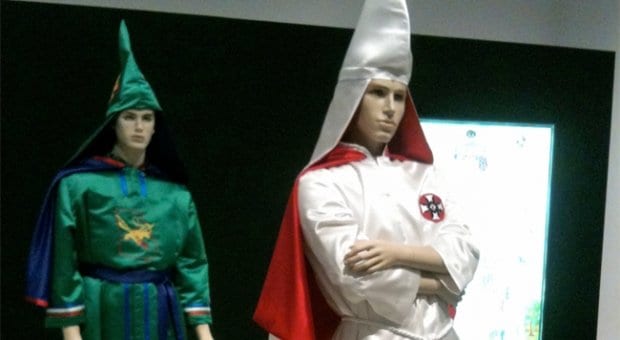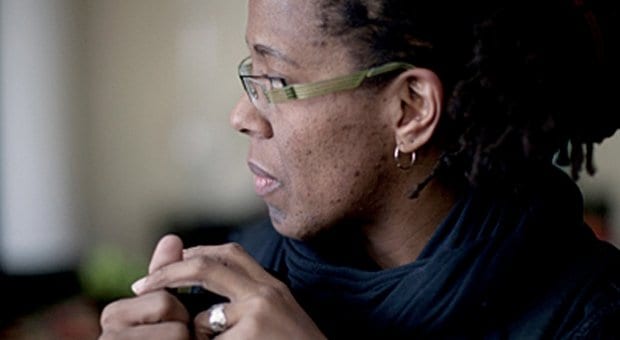
"There were cross burnings documented all over Ontario," says Deanna Bowen, referring to the KKK.
Deanna Bowen was joking when she first proposed the KKK as the subject for an exhibition. Hot on the heels of the Art Gallery of York University (AGYU) group show Centre for Incidental Activisms (CIA), the gallery offered her a shot at a solo project. Bowen’s CIA piece explored Selma, Alabama, a small rural town known for bloody clashes during the civil rights movement. She was there researching a different project when curator Philip Monk proposed she do another piece about the city’s history.
“I was a smartass and suggested doing a project on the Klan, thinking they would balk,” laughs the Toronto-based artist. “They didn’t balk, and I was stuck with it. It’s a small picturesque country town full of black folks, and it reminded me of my great grandparents. From there, I started making associative connections between what I knew about it as a Klan town and the way my great grandparents walked the world.”
Hailing originally from Alabama, Bowen’s family gradually migrated to Canada via Texas and Oklahoma, finally crossing the border in 1911. Part of a complicated history of black migration from Southern states into Canada, their presence was the result of a mistake by the Canadian government. Needing to grow the population during the westward expansion of Alberta and Saskatchewan, then-prime minister Wilfred Laurier’s Liberal government placed ads in Southern newspapers, encouraging Americans to make a break for the Great White North.
“They didn’t do a lot research about which papers they were advertising in and ended up putting ads in a bunch of black papers,” Bowen says. “Once they realized their mistake, they started actively discouraging black migration to Canada by releasing false information to newspapers. But by that point there was already a growing population.”
As white Canadians became increasingly uncomfortable with their neighbours of colour, Klan groups began popping up. Far from being a detached historical survey, Bowen’s interest in the group had deeply personal resonance. Shortly after settling in Canada, her family’s home burned to the ground in a mysterious fire.
“This whole exhibition was focused on my ability to prove the Klan set the fire,” she says. “I never got close enough in my research to prove that. But I did learn a lot about the social environment that surrounded the fire.”
Under the moniker Invisible Empires, the sprawling exhibition brings together films, audio recordings, photographs, performance and textile works to reveal the largely untold story of the KKK’s migration north of the 49th parallel. Though Canadians usually associate white-robed men burning crosses with the Deep South, Bowen’s research uncovered a considerable history of the group’s activities here.
“The Klan was everywhere,” she says. “There were cross burnings documented all over Ontario, the last one being in North York in the mid-’80s. I think the way Canadians deal with it is to blow if off, saying it didn’t happen that much up here. We’re so caught up in denial that I think just about everything this show reveals is going to be shocking on some level.”


 Why you can trust Xtra
Why you can trust Xtra


